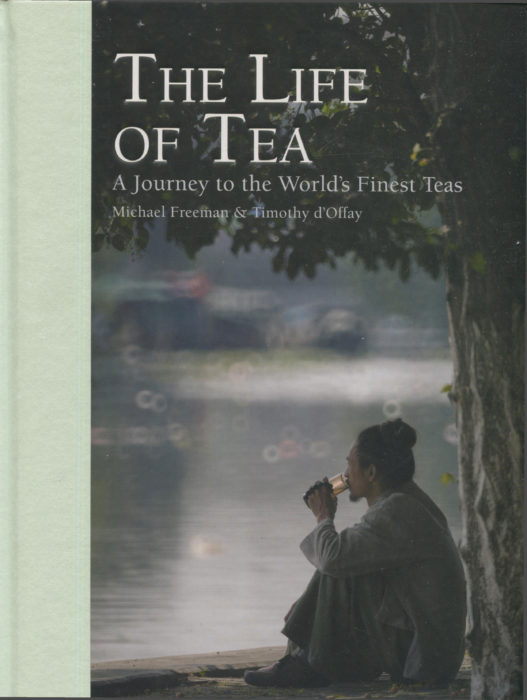
After water, mankind drinks tea more than any other beverage. Those tea leaves have twice the caffeine of coffee beans, though most teas reduce the caffeine content per cup to less than half of coffee. Tea drinking is relatively new, less than five thousand years in our human experience. It began in Yunnan province in China but then spread rapidly throughout East Asia. The “big four” tea growers are China, Japan, India, and Sri Lanka. But you won’t find tea growing everywhere in those lands. No, tea is just like wine. There is a need for the proper terroir, only certain lands with the right soil and climate can produce teas of distinction.
Today, we don’t even know how many cultivars of tea there are. They number in the thousands and the world of tea is quite as complex as that of wine grapes.
Co-authors Michael Freeman and Timothy d’Offay are engaging writers with decades of tea passion. Freeman is an exceptional photographer, as this shot proves:

When you think of coffee, you think of activity and bustle, that repeating morning rush. Tea? Well, there are tea houses blossoming in New York City, in every city, and they all seem to have this Zen quality: quiet, calm and with no rush. Even as the tea is grown, as this photo shows, there is tea quiet and beauty in that gorgeous natural setting.
The Life of Tea is divided into three parts. First, in From Earth to Cup, we get a fifty-page tea education. The botany, the terroir, the processing and most certainly the preparation. These are leaves, not beans, and some considerable care is needed to fully extract all the grandeur.
In the second part, Tea Mountains and Monasteries, you visit those four centers of tea growing. And, that earlier picture I showed is pretty but a tad deceiving. Tea mostly grows mostly on hills and mountainsides. In this chapter, you visit those mountains and see the impact of steepness and fog. Growing, maintaining and harvesting are labor intensive. There are now some machines but mostly this is work done by hand, leaf by leaf.
In Tea Towns & Culture you are treated to an exploration of towns that have evolved alongside the plants. You visit the potters who craft art for brewing tea. And you can see the very special places designed for tea spaces to sip in quiet. Some compact, some high in the air on bamboo poles. The quality of the tea inspires people to seek a matching space to honor its consumption. That entire tea culture is captured here, in photos and words, with respectful reverence.
For most of us, the tea experience begins with grabbing a cardboard box off a store shelf. That’s really not what tea is about. Tea has its own life and The Life of Tea will educate and enchant you with the real story of tea.
